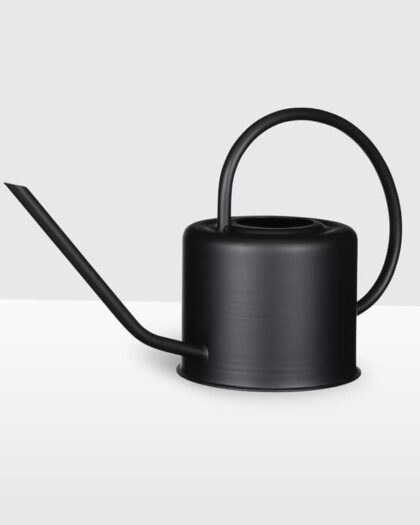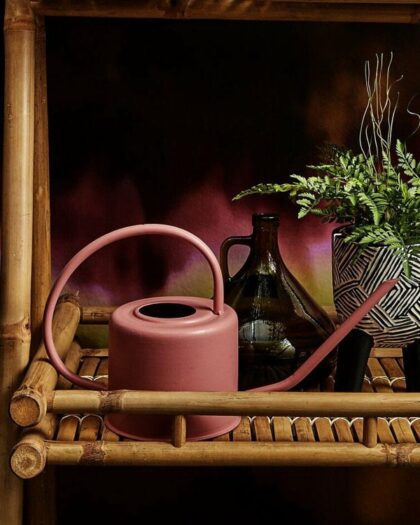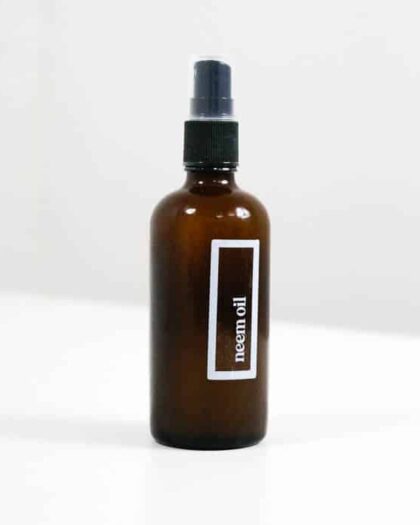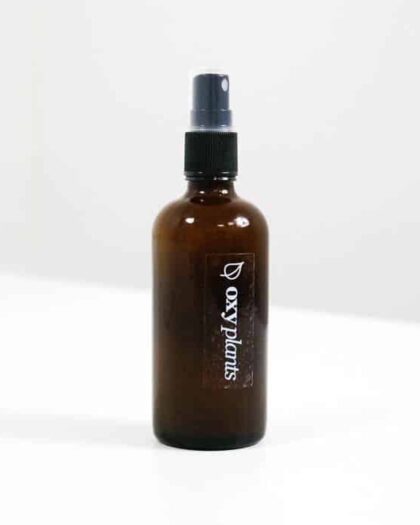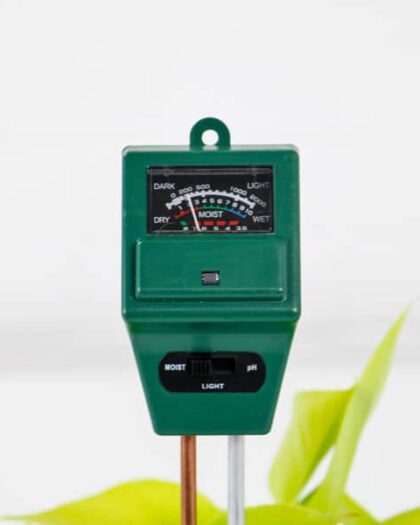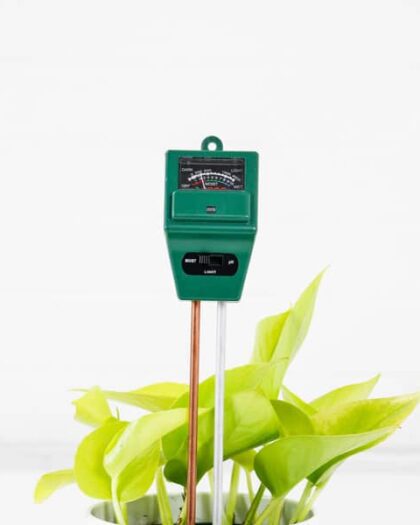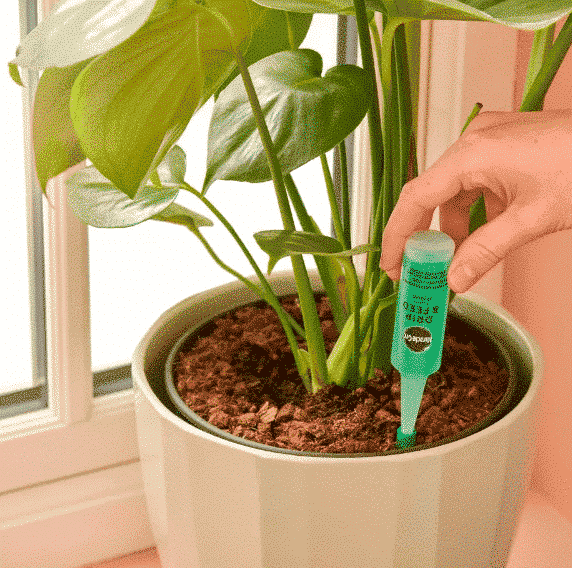What's in this indoor plant care guide
About Areca Palm
Native to the tropical regions of Africa and Madagascar, The Areca Palm (Dypsis Lutescens) certainly brings an exotic touch to any home! In Britain, the Areca is one of the most popular indoor houseplants, available in several sizes to suit any room.
If you see palm trees when you’re abroad, then you’re probably looking at an Areca!
It loves sandy shores, summer sun, andan occasional strawberry daiquiri. Actually, maybe not the last one.
When well-looked after, the Areca Palm can live for over 10 years and grow as much as 12 inches a year! It makes a fantastic project for beginners, or those prone to the occasional plant-care gaff!
Botanical Name
Nicknames
Air Purification Qualities
Child & Pet Safe?
Sun Exposure
Soil Type
Hardiness Zones
How to care for Areca Palm
Light & Location
The Areca Palm loves to be placed in a spot with bright, indirect light. In the summer months, place your palm in an east or west facing window. In the winter months (when the sun sits lower in the sky), perhaps even move your plant into a room with a south facing window. This will help to maximise photosynthesis and keep your plant happy and healthy!
Watering
As this plant is native to subtropical regions, plenty of water is required. The finger test or our trusty soil & light tester, will really be your friend when caring for your Areca Palm. When the top couple of inches of your soil or substrate are dry, it’s time to water!
You’ll need to water your Areca (roughly) once every ten days. During the summer months, this may increase to once a week. Equally, in winter months, it’s not uncommon for larger Palms to only need watering once every two weeks or even less.
You be the best judge of your soil moisture levels!
Temperature & Humidity
Palms are naturally found in subtropic regions around the world, where it is warm and wet. As such, this is the environment you should be striving to replicate in your plant-care routine.
To keep your plant on top form, give it a mist once a week. You can use one of our plant misters, or you could pop your Areca in the shower, which will also help to remove any dust off your leaves and maximise photosynthesis. Also, keep your Areca well away from any heaters or radiators in the winter months. This will help to minimise any fluctuations in temperature that are likely to hurt your palm in the long run.
Soil
Place your Areca in a loam based soil and mix with a generous amount of sand. This will help to maximise critical factors such as nutrient intake, soil aeration, and soil drainage. You can check out some of the soil substrates we have availble to help increase these factors in your potting mix.
If you’re wanting to go that extra mile for your Areca, sit it in slightly acidic soil (pH 6-6.5). Although this is sometimes difficult to control, you could make your soil more acidic by adding some nitrogen-rich nutrients.
Fertiliser
Your Areca will need to be fertilised once a month during the growing season. Palms need strong roots and big bushy foliage, it’s wise to pick a fertiliser with a NPK rating weighted towards nitrogen and potassium (perhaps, a little lower in phosphorus).
When fertilising, always dilute with plenty of water. Whatever ratio of fertiliser and water your instructions state, always make it slightly mote watery. You never want to scorch your houseplant’s roots.
You can check out our range of houseplant fertilisers.
Pruning
Pruning is absolutely crucial to having an Areca that is pleasant to look at. The last thing you want to see is dead stems and brown-tipped leaves on your palm. Using sterilised pruning shears, cut any dead parts of your leaves off. It’s always good to try and mimic the shape of your plant’s leaves as well. So, a long thin triangle is what you’re aiming for.
Propagating
Areca Palms can be propagated, but make sure you’ve already practiced your skills with something slightly easier (like a Spider Plant of Devil’s Ivy) first. You can propagate your Areca by division (cutting\extracting a small stem from your soil) or seed (from your local garden centre).
Areca Palms will typically take a couple of weeks to develop roots strong enough to be repotted. However, you can reduce this using rooting powder.
Potting and Repotting
Check your houseplant’s roots every two to three years. If the roots can be seen touching, or even growing beyond, the bottom of your pot then it is time to repot.
Equally, if you don’t want your Areca to grow any more, you can always keep it in the same pot. This will crowd the roots and help to limit the size of your plant.
Tools to help care for your Areca Palm
-
Mica Decorations – Metal Watering Can
From £9.99 Select options This product has multiple variants. The options may be chosen on the product page -
Neem Oil
From £5.99 Select options This product has multiple variants. The options may be chosen on the product page -
Baby Bio Houseplant Bug Killer 1L
£10.99Original price was: £10.99.£8.99Current price is: £8.99. Add to basket -
Baby Bio Houseplant Food
£4.99Original price was: £4.99.£3.99Current price is: £3.99. Add to basket
Common Problems
The Areca Palm is considered to be one of the easier houseplants you can take care of. However, your main issue is going to be keeping your leaves in tip-top condition.
Common pests & plant diseases
The Areca is prone to the occasional infestation from spider mites and mealy-bugs. If this occurs, be sure to use some neem oil or other insecticide as soon as possible.
It is also wise to isolate the plant so the pest or disease doesn’t infect any of your other plants.
Wilting or Browning Leaves
If the leaves of your Areca are beginning to wilt, then this may be a sign of underwatering.
Equally, if they turn a yellowish or brown colour, then you may be overwatering. In either case, look to adapt your watering schedule.
If leaves are beginning to turn black, or look crispy, then the leaves are probably being scorched. In this instance, move your Areca away from any windows or radiators and trim off any dead leaves.
General Overwatering
One of the most common problems with Areca Palms is overwatering. If this occurs, your palm may incur root rot which leads to nutrient deficiency.
If this occurs, the health of your palm is in serious danger. It can be possible to revitalise your plant, but this will require removing it from its nursery pot and removing any rotted roots. Repot with a well draining mixture and only water again once the soil has dried.
If you see yellow leaves and/or soggy stems, change your frequency of watering, introduce proper drainage methods, and only water when the soil is dry to the touch.
Chemicals in Tap Water
Areca Palms are sensitive to the chemicals in tap water. If you live in the South of England, or an area in the world known for having hard water, you may have more luck watering your Areca with collected rain or distilled water.
In the UK, tap water contains small levels of fluoride, chlorine, nitrates, and arsenic. Whilst these chemicals help to purify our water and make it drinkable for humans, these can also damage the health of your Areca Palm.
FAQ's
How often should I clean the leaves of my Areca Palm?
You should look to clean and mist the leaves of your Areca Palm once a week. The quickest and most effective way to do this can be to wash them in the shower, or leave outside in the rain (when it isn’t Winter).
Although this is not essential, it’s always good to know that you’re doing everything you can to maximise the growth of your Areca.
What happens if my Areca Palm sits in direct sunlight for too long?
If you sit your Areca in direct sunlight for too long, its leaves will begin to scorch. This is results in your leaves turning black, looking dry, or even crispy. If this occurs, move your plant away from the sun and look to cut off any dead leaves.
Can my Areca Palm live outside?
In the UK, you’ll struggle to keep an Areca Palm alive outside. Your Areca will develop brown spots (and may even die) in temperatures lower than 13 degrees celsius. Although it’s resilient to many factors, a British winter would almost certainly kill it off. No one wants that!
Where will the Areca Palm look good in my home?
An Areca Palm makes a fantastic natural showstopper in any home. Given the fact the Areca can be tall and has a beautiful bushy foliage, it would look fantastic in the corner of a room. In this position, it will help to round off any sharp edges in your room.
Equally, if your Areca is small, if would be a pleasant plant to place on a coffee table or work desk. This will raise your plant off the ground, giving it more light over the course of the day. Not to mention, you’ll have something to talk about if your friends and family come over for coffee!
Is the Areca Palm Air Purifying?
Yes! This indoor houseplant is air purifying and can be used to purify the air in your home. Keeping your Palm alive can genuinely make your family and furry friends happier and healthier. Don’t believe us? Read this study by NASA (1989).

